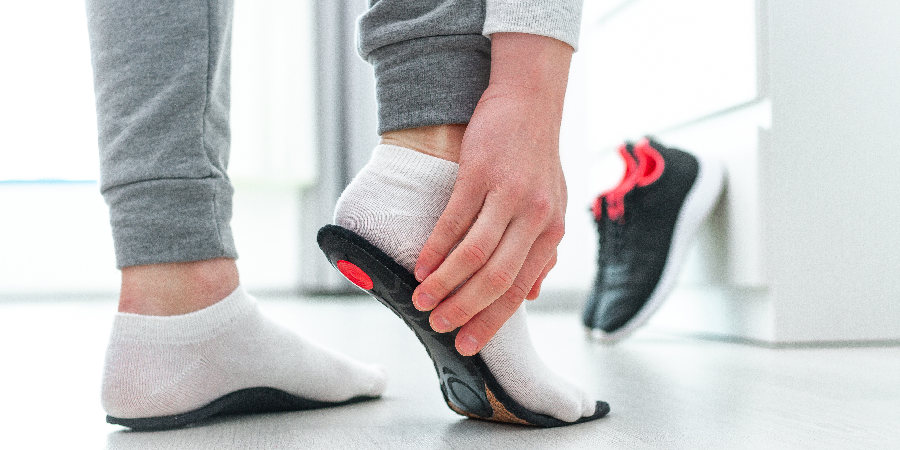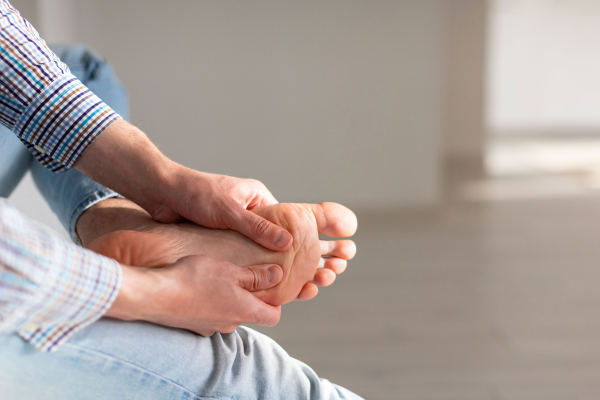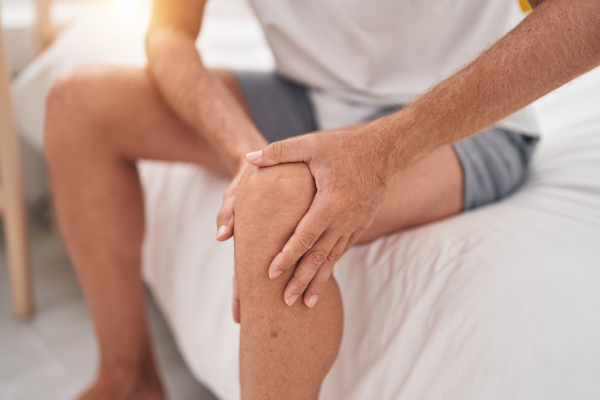A common occurrence in many people is “flat feet” or “fallen arches”. This is where the normal raised arch of the foot, between the ball and the heel, is not present. Having the whole foot touching the ground is not necessarily a problem, in fact babies are born with flat feet and only develop arches later in childhood. For some people however, fallen arches can lead to foot pain, or cause further problems with their ankles, legs or back.
What are Fallen Arches and Flat Feet?
The underside of a normal adult foot has two arches, the longitudinal arch running lengthwise down the foot, and the transverse arch running across the width. These arches provide the flexibility and springiness that help us to do the things we take for granted, such as balancing, walking, running, and jumping. Arches help with shock absorption and distributing a person’s weight evenly around the foot.
Although most young children develop arches by the age of six, 20% may still have flat feet (the absence of developed arches) by the time they reach adulthood. Adults sometimes lose an arch in one or both feet, known as fallen arches. The most common cause being an inflammation or tear in the leg’s posterior tibial tendon that supports the arch.
Causes of Flat Feet and Fallen Arches
The lack of arches from birth, known as flat feet, may be caused by a person’s genes. This condition usually causes minimal problems, as they have adapted their movements and balance throughout their entire life. Fallen arches, the collapse of one or both arches can be more problematic. Causes of a fallen arch include physical trauma, such as an Achilles tendon injury or broken bone, or issues arising from obesity, high blood pressure, diabetes, rheumatoid arthritis and even pregnancy. People with Cerebral Palsy or Down syndrome can also be at risk.
Symptoms of Flat Feet and Fallen Arches
Often, a person with flat feet or fallen arches has no problems or symptoms. Where problems do occur, the symptoms include:
- Pain in the area of the arches or heel.
- Feet that tire easily
- Restricted foot movement, such as not being able to stand on your toes
- Swelling on the underside of the foot
- Ankle, leg, and back pain
- A feeling of imbalance, usually when only one foot has been affected
How to test yourself for Fallen Arches
Checking for fallen arches or flat feet is fairly simple. Stand upright in bare feet and ask a friend to look at the inner side of your foot. If the entire length of your foot is touching the ground, then you have a fallen arch or flat foot. If the middle part of the foot is slightly raised off the ground, then your arches are normal.
How to treat Fallen Arches
Flat feet rarely cause a problem, and it is important to remember that most children have flat feet until they’re about 6 years of age. Similarly, a fallen arch that is not causing any issues does not need to be treated, however it is important to consider if other ailments, such as ankle, leg or back pain may have their root in a fallen arch.
Where swelling exists, rest and ice can be used to reduce pain and swelling. A skilled podiatrist can help assess and correct problems arising from fallen arches and will also be able to tailor a set of flexibility and strengthening exercises to help restore muscle and ligament function, helping to alleviate the problem. Orthotic devices, such as shoe inserts, are often used to help support a weak arch, whilst physiotherapy can help rebuild muscle strength. In severe cases, surgery may be required, but this is very rare.

If you are struggling with fallen arches we have a team of highly skilled and qualified podiatrists and physiotherapists. We can help assess and correct issues arising from flat feet and fallen arches, as well as aligned problems such as plantar fasciitis. With the correct treatment, fallen arches need not be a problem. If you would like to find out more about how our team can help you, please get in touch.





